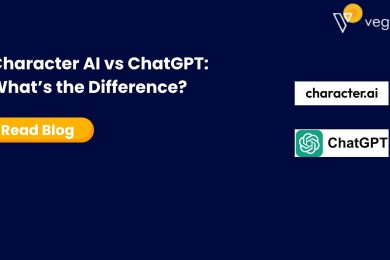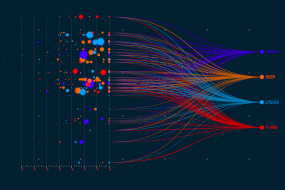
Cash is king the saying is going, but in modern virtual global cash is now not the simplest manner to get short get right of entry to finances. A new type of financial tool has emerged that permits human beings to borrow cash within minutes immediately to their financial institution bills – cash advance apps.
By connecting to a consumer’s financial institution account, those apps are able to right away evaluate loan applications and deposit authorized price ranges genuinely, getting rid of the wait times of conventional lending. Their velocity and comfort have fast made cash apps a popular manner for humans to get entry to small quantities of brief-time period credit scores. However, with accessibility comes risks that consumers must be aware of. This blog will explore how cash advance apps work, their potential benefits, and important drawbacks to consider.
Traditional borrowing process
In the past, getting a loan from a bank was a lengthy process that often required a lot of paperwork. First, a person would have to visit their bank to inquire about different loan options and find out which ones they were eligible for. They would then need to fill out an extensive loan application form providing many personal and financial details. The bank would then conduct a thorough review of the applicant’s credit history to check if they had any past defaults or late payments. They also analyzed things like income, job stability, existing debts, and expenses to determine repayment capacity.
Once the application was submitted, it often took weeks for the bank to make a decision as they had to carefully assess all documents. There was no quick approval process. If approved, more documents had to be signed and often collateral or guarantors were required to secure the loan amount. Only after all terms were agreed upon would the bank disburse the loan amount. Regular repayments through postdated checks or debit arrangements also had to be set up. Any delays in repayments would be followed up through phone calls and notices. Closing of the loan account took place only after full repayment of the principal with interest.
The whole process from inquiry to repayment involved multiple steps which prolonged the time taken. It was an inconvenient system both for banks needing to manage large paperwork and for customers waiting endlessly for approvals.
What is a cash advance app?
A cash advance app is a mobile application that allows users to access small loans digitally through their smartphones. Using these apps, people can get cash advances instantly when they need money until their next payday. When someone signs up for a cash advance app download, they provide basic personal and employment details. This information helps the app determine if the person is eligible for a loan. Once approved, the user can request loan amounts starting from as little as $50 up to a few hundred dollars depending on the app. The money gets deposited directly into the user’s bank account within minutes or hours.
However, there is a fee associated with these cash advances which makes the interest rates quite high compared to regular loans. The repayment is also due very soon, usually on the user’s next payday. If the person is unable to repay on time, additional late fees apply. While cash advance apps offer convenience and quick access to funds, the high costs mean they should only be used for emergencies and not as a long-term credit solution. Many states also have regulations regarding the maximum interest rates charged by such apps.
Cash advance apps provide a digital alternative to payday lenders for immediate cash needs. But users must carefully review fees and repay on time to avoid spiraling debt.
Convenience and Accessibility of Cash Advance Apps
Cash advance apps make it easy to get money fast. You can use these apps to borrow a small amount of money. The apps let you get the money quickly, usually in one day or less. This makes them very convenient when you need cash right away.
To use a cash advance app, you first download it on your phone. Then you connect the app to your bank account. The app looks at your account transactions to see if you qualify. If you qualify, you can request a cash advance up to a certain amount. This amount is based on your income and how much you use the app.
After you request the cash, the money goes into your bank account the next day. You can use it just like your paycheck. When payday comes, the app takes the money back out of your account. This can happen automatically.
The convenience makes these apps very popular. People use them to cover emergency costs like car repairs. They also use them when an expense comes up before payday. The apps give access to cash within a day without a long application. This makes them handy when you need money fast. While convenient, the fees can add up if you use them too much.
How Cash Advance Apps are Changing Borrowing Habits?
Cash advance apps make borrowing money quick and convenient. These apps let you get cash fast right from your phone. This is changing how people borrow and manage money.
In the past, if you needed money before payday, you might ask family or friends. You could also get a payday loan from a store. This required paperwork and a credit check. It took time to get the money.
Now cash advance apps let you skip all that. You simply download an app and connect your bank account. With a few taps, you can have cash sent to your account the next day. There is no credit check or long application process.
Having such easy access to cash can impact borrowing habits. Some people use the apps to get extra spending money for non-essentials. Others use them to bridge small money gaps between paychecks. Relying on the apps too much can lead to fees and debt.
On the plus side, the apps help people cover emergency costs. This can prevent late fees or service disconnects. The quick cash may also deter some from riskier or predatory loans.
Overall, cash advance apps make borrowing super simple. The convenience can be helpful or harmful depending on how people use it. More thought may be needed for healthy money management.
Impact of Cash Advance Apps on Financial Inclusion?
Cash advance apps are making it easier for more people to access financial services. These apps provide small, short-term loans via a mobile device. They are expanding financial inclusion for underserved groups.
In the past, many low-income families had trouble qualifying for loans and credit. They also lacked access to mainstream banking. Cash advance apps help fill this gap.
The apps look at banking data versus credit scores. This allows more approval for small loans. The entire process happens through the app on a phone. No long application or credit check is needed.
Having access to credit gives people options during financial shortfalls. It can prevent late fees, power shutoffs, or evictions. The quick cash acts as a safety net during unstable income periods.
On the negative side, the fees and interest rates can be high. Some users become reliant on the loans each month. This creates debt cycles. More education on app risks could prevent this.
Cash advance apps meet short-term needs. They provide a gateway to financial services that some couldn’t access before. However, users should also build longer-term stability. The apps work best as an occasional bridge during income dips, not a monthly habit. Financial literacy and planning are still important.
Potential Benefits and Drawbacks of Cash Advance Apps?
Cash advance apps have become increasingly popular as they allow users to access money instantly. However, like many financial tools, there are pros and cons to consider.
The main benefit is accessibility and convenience. With a cash advance app, users can request money at any time right from their phone. This means they do not need to wait for banking hours or drive to an ATM if an emergency expense arises. Money can often be deposited directly into a user’s account within minutes or hours of approval.
For some, this provides peace of mind knowing funds are available when needed. However, the virtual and paperless nature can also make it very easy to overspend without thinking. Since money feels more abstract on a phone than physical cash, it does not trigger the same psychological cues about spending.
While filling a short-term cash gap, cash advance apps are not meant for long-term reliance and can be costly when used frequently. Interest rates tend to be much higher than credit cards or personal loans since there is no credit check. Late or missed payments can also result in additional fees.
If someone comes to depend on them for non-emergencies or living expenses, it can snowball into a cycle of rising debt that is difficult to pay off. The convenience comes at a significant price compared to more traditional financing options. Regular or high-balance users may be better off seeking alternatives like a 0% credit card or debt management plan.
Cash advance apps provide quick access to funds but should be used sparingly due to high costs. They work best only for short-term, unexpected needs rather than routine expenses. Careful money management is important to avoid expensive debt cycles.
Conclusion
Cash advance apps have undoubtedly made borrowing more convenient by putting money within reach on our smartphones. For unexpected small expenses, their speed can provide relief. However, it is important consumers understand the high costs of these loans compared to alternatives like credit cards. Regular or ongoing use of cash advance apps is not a replacement for proper financial planning and budgeting. While filling temporary cash gaps, they should not be relied upon as a long-term credit solution or used for non-essential spending. With awareness and responsible management of these virtual options, consumers can harness their accessibility without falling into cycles of costly debt. As technology streamlines access to money, financial literacy remains key to navigating new lending landscapes profitably.











